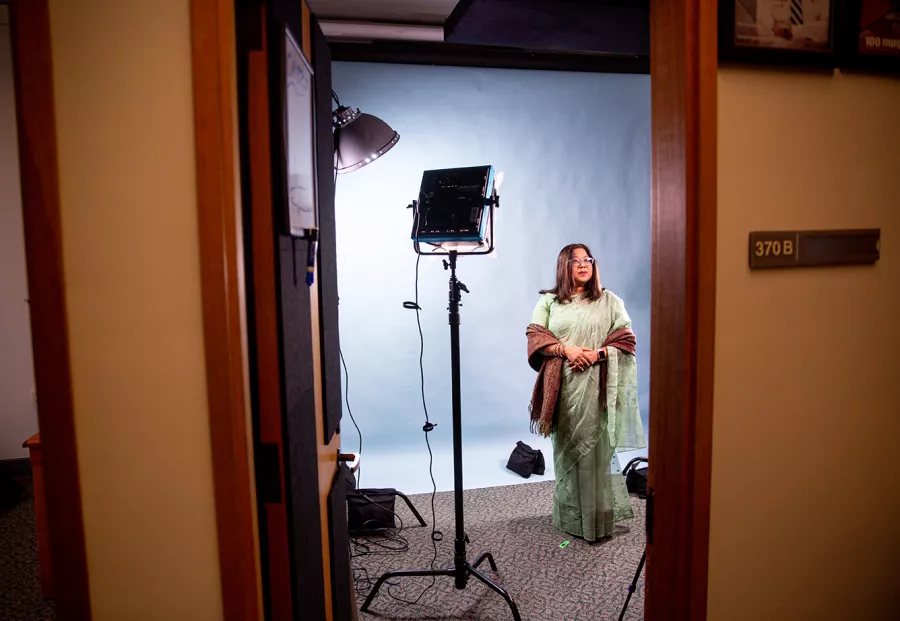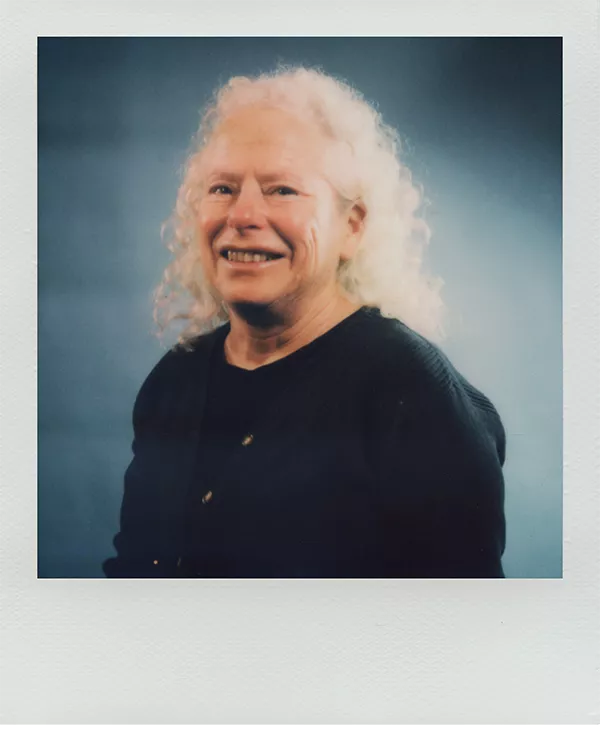Title IX, the federal law prohibiting gender discrimination in education, has hardly solved sexism.
But the decades since Title IX was enacted have surely brought more opportunities for women in higher education—and more opportunities for all of us to benefit from their brilliance.
Listen to a few female faculty members about what excites them about their research and their work with students.
Nicole Hoekstra
Professor of Polymer Materials Engineering
Being engineers, we’re trying to solve problems. We’re working with industry partners here in Washington state and the greater region, and they bring the problems to us. When I first started at Western 25 years ago, we did a lot of projects with aerospace, transportation, marine, and recreation industries. Now, all of my projects sponsored by those industries are addressing plastic waste, recyclability, biodegradability, and identifying ways to incorporate these materials more thoughtfully, so that we don’t continue to persist the plastic waste problem.
Jeanine Amacher
Associate Professor of Biochemistry
My lab is interested in how proteins interact with each other, specifically proteins that target peptides, or short sequences of amino acids. When we solve protein structures, we are typically the first people who have seen the molecular details of this particular protein domain or interaction. There are several steps to this process: We purify and crystallize the proteins and then send the crystals to a synchrotron facility where we shine high-energy X-rays at them. From the diffraction pattern, we calculate the electron density, and can fit the atoms based on the sequence. We then use the structure to understand the results from our biochemical assays.
Moushumi Sharmin
Associate Professor of Computer Science
Most of my research focuses on designing technology for autistic individuals and families of autistic children. We have many autistic students in computer science and other STEM departments and some of them come and work with us because they think that they can make a difference in many autistic students’ lives. As we are learning more and more about autism, we now know that this is not a disease, it’s a condition. It’s a neurodiversity. So instead of looking at limitations and challenges, we just started looking at strengths. They have these capabilities, so how do we make sure that technology can help them to maybe even sharpen and enhance those capabilities. We call it a strengths-based approach. So that’s where the technology is going: not looking at problems, but looking at people’s strengths, and trying to utilize those so that our lives get better.




Sura Alqudah
Associate Professor of Engineering and Design Director of Manufacturing Engineering
The motto that our professional society always uses is, “Engineers make things; industrial engineers make things better.” It’s the focus on the process of how to make those things. Mainly, my research is in the medical field. I look at medical implants to try to figure out a way to make them more efficient in terms of the ease of installment and making it safer for the surgeons and the patients. Part of my current research focuses on improving the design of specific surgical implants that orthopedic surgeons use in the operating room. The current design heavily relies on the expertise of the surgeon and X-ray imaging during the procedure. The research team and I improved the design to be used efficiently with minimal X-ray exposure. It was a novel design idea for which we were able to file a patent application.
Liz Schermer
Professor of Geology
You’re up in the mountains, hammering on rocks, looking at basically the results of really, really old—hundreds of millions of years old—earthquakes. I really love these projects because you get to be up in the mountains, and the rocks are just, really cool. They’re twisted and deformed and squished and melted—and they’re pretty. It’s kind of a geometric, 3D puzzle, to try to understand how these rocks got into the shapes they are. Two hundred million years ago, none of this was here. We were in the middle of an ocean. All this land, from Spokane over, has been kind of glommed on to North America for the last 200 million years, and so we’re figuring out how that happened. Some of those rocks came from as far away as Greenland. If you go up to Yellow Aster Meadows or Park Butte, some of those rocks came from Greenland, and that blows me away.
Nikki Larson
Professor and Director of Polymer Materials Engineering
The composites industry is still a really new field. The development of materials and processes have a huge influence on how they are used and how they impact the environment. We need to ensure materials follow cradle-to-cradle, instead of cradle-to-grave. We are ensuring that composites come full circle and that we are better stewards. No matter what material it is, it is a finite resource. For example, my students and I are working on a composite using mushroom roots. We want to replace chip board and particle board with a more biofriendly alternative.

Portraits in Time
Photographers Luke Hollister and Sean Curtis Patrick made some of these portraits using a vintage Polaroid SX-70, a camera that debuted the same year that Title IX was enacted. Compare the Polaroids to the digital images of today to see subtle changes in the passage of time.















